39 Interesting Pearl Harbor Facts
Here are 39 interesting Pearl Harbor facts:
- The attack commenced at 7:55 A.M. on Sunday, December 7, 1941
- The attack lasted 110 minutes, from 7:55 a.m. until 9:45 a.m.
- The Japanese launched their airplanes in two waves, approximately 45 minutes apart.
- The first wave of Japanese planes struck Pearl Harbor at 7:55 a.m. The second wave reached Pearl Harbor around 8:40 a.m.
- The Japanese attacked the United States without warning
- When Japanese Commander Mitsuo Fuchida called out, “Tora! Tora! Tora!” (“Tiger! Tiger! Tiger!”) upon flying over Pearl Harbor, it was a message to the entire Japanese navy telling them they had caught the Americans totally by surprise.
- The Japanese traveled 3,400 miles across the Pacific to execute their attack on Pearl Harbor
- The Japanese attack force stationed itself approximately 230 miles north of the Hawaiian island of Oahu.
- Plans for a surprise attack against the United States were begun as early as January of 1941.
- The Japanese forces were led by Vice Admiral Chuichi Nagumo
- The Japanese fleet consisted of 353 planes
- The Japanese used the codename “Operation Hawaii” for the attack on Pearl Harbor. This later changed to “Operation Z.”
- The Japanese specifically chose to attack on a Sunday because they believed Americans would be more relaxed and thus less alert on a weekend.
- Many U.S. servicemen were either still in their pajamas or eating breakfast in the mess halls when the attack on Pearl Harbor began.
- U.S. servicemen identified the invading planes as Japanese because of the “meatballs,” what they called the large, red circle (the Rising Sun) on the side of Japanese planes.
- The Japanese only attacked the ships at Pearl Harbor Naval base and airplanes at Hickman Airfield, leaving surrounding areas such as repair facilities, the submarine base and fuel oil storages areas unharmed
- The Japanese struck the airfields at Hickam Field, Wheeler Field, Bellows Field, Ewa Field, Schoefield Barracks, and Kaneohe Naval Air Station.
- The United States aircraft carriers, the primary target of the attack, were not at the base at the time
- Because of this, the Japanese cancelled a planned second attack
- There were eight battleships at Pearl Harbor that day, which included all the battleships of the U.S. Pacific fleet except for one (the Colorado).
- Seven of the U.S. battleships were lined up in “Battleship Row.”
- All eight U.S. battleships were either sunk or damaged during the attack. Amazingly, all but two (the Arizona and the Oklahoma) were eventually able to return to active duty.
- Four of the American battleships stationed in “battleship row” were sunk. Another was capsized and a sixth run aground
- The Arizona exploded when a bomb breached its forward magazine (i.e. the ammunition room). Approximately 1,100 U.S. servicemen died on board.
- After being torpedoed, the Oklahoma listed so badly that it turned upside down.
- During the attack, the Nevada left its berth in Battleship Row and tried to make it to the harbor entrance. After being repeatedly attacked on its way, the Nevada beached itself.
- To aid their airplanes, the Japanese sent in five midget subs to help target the battleships. The Americans sunk four of the midget subs and captured the fifth.
- 11 other ships were sunk and 188 planes destroyed
- 2,343 men were killed, 1,272 were wounded and 960 left missing
- A total of 2,335 U.S. servicemen were killed and 1,143 were wounded. Sixty-eight civilians were also killed and 35 were wounded
- The Japanese lost 65 men, with an additional soldier being captured.
- Only 28 Japanese planes were shot down and 5 midget submarines sunk
- The United States declared war on Japan the next day as FDR gave his famous “Day of Infamy” speech to Congress
- President FDR made a last minute edit to his speech, changing “a day that will live on in world history” to “a day that will live in infamy”
- The U.S. declared war on Germany and Italy on December 11, after they declared war on the U.S.
- The dropping of atomic bombs on the Japanese cities of Hiroshima and Nagasaki helped bring an end to World War II in 1945
- There was a floating National Monument erected on the hull of the sunken Arizona in 1962
- There is a conspiracy theory that FDR provoked the Japanese attack in order to sway American opinion and make it possible for the U.S. to enter the war
- The United States declared war on Japan on December 8, 1941, the day following the attack on Pearl Harbor.
- “Remember Pearl Harbor!” became a rallying cry for the U.S. during World War II.
Pearl Harbor Warbirds offers the best Hawai‘i flight adventure tours available. Be immersed in the details of the infamous attack on Pearl Harbor and soar above the important sites that played a part in the “Day of Infamy.” Relive history as you retrace the steps of the Army and Navy airmen in the days following the bombing. Fly on some of the same routes the Japanese attackers used into the airfields at Wheeler, Kāne‘ohe and Bellows. There are many air tours in Hawai‘i, but only one warbird airplane flight. Located in Honolulu, Hawai‘i Pearl Harbor Warbirds provides a personal historical experience making it one of the best O‘ahu attractions.
Fly Pearl Harbor like it was on December 10th, 1941. Learn more about our Admiral’s Warbird Adventure.

